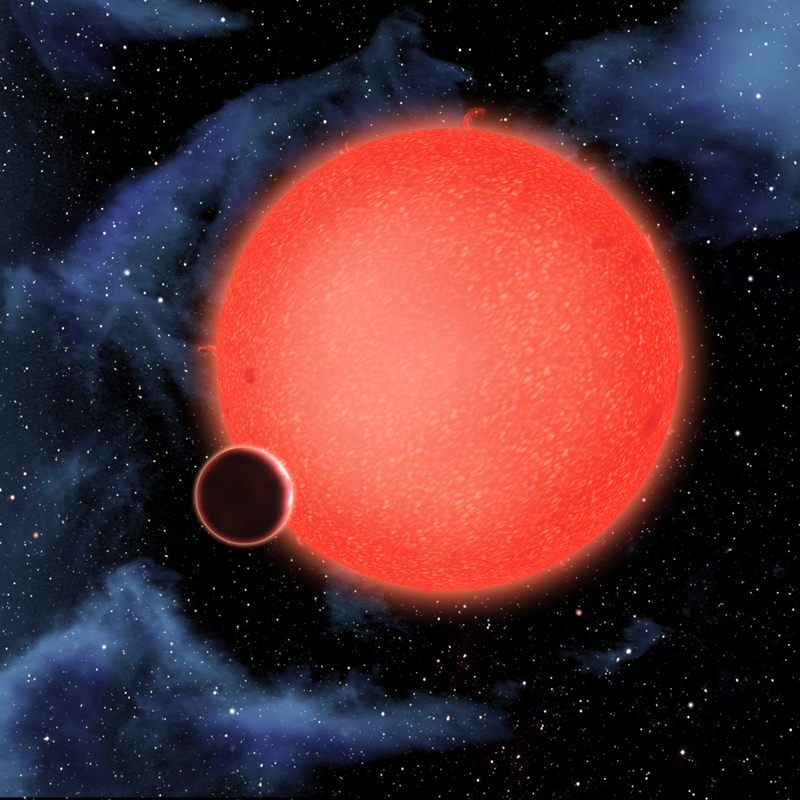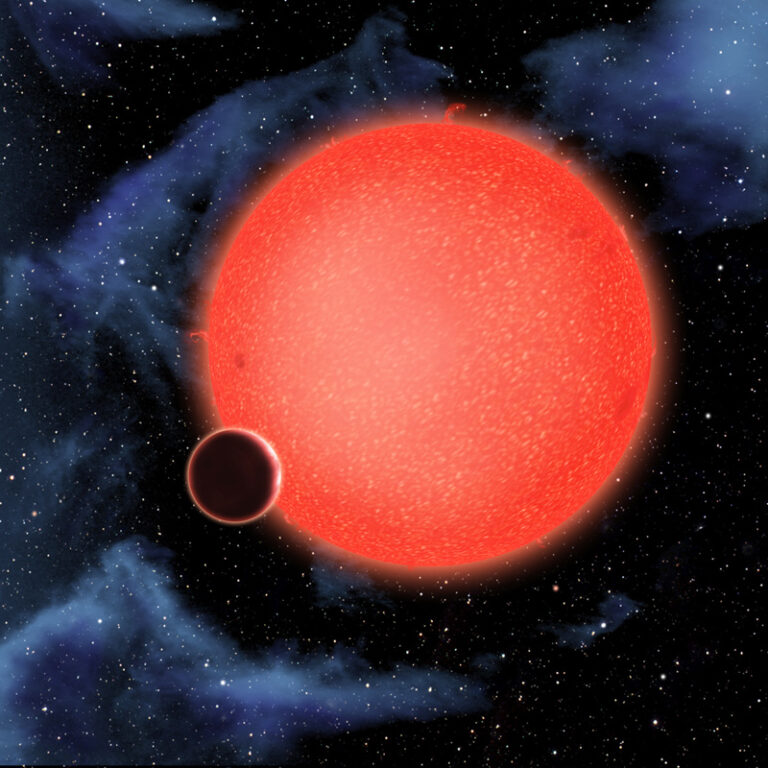Far in space, a watery realm: Hubble unveils a novel category of exoplanet.
An international team of astronomers, led by Zachory Berta from the Harvard-Smithsonian Center for Astrophysics (CfA), conducted observations on the planet GJ 1214b. Berta stated that GJ 1214b is unlike any planet we are familiar with, as a significant portion of its mass is composed of water.The discovery of GJ 1214b was made in 2009 by the ground-based MEarth Project, led by CfA’s David Charbonneau. This super-Earth has a diameter approximately 2.7 times that of Earth and weighs nearly seven times as much. It orbits a red-dwarf star every 38 hours at a distance of 2 million kilometers, resulting in an estimated temperature of 230 degrees Celsius.
In 2010, CfA scientist Jacob Bean and his colleagues reported that they had measured the atmosphere of GJ 1214b, suggesting that it is primarily composed of water. However, their observations could also be explained by the presence of a haze enveloping the planet.To further study GJ 1214b, Berta and his co-authors, including Derek Homeier from ENS Lyon, France, utilized Hubble’s Wide Field Camera 3 (WFC3) during the planet’s transit in front of its host star. This transit allows the star’s light to pass through the planet’s atmosphere, providing insights into its gas composition.
Berta explained that they are using Hubble to measure the infrared color of the sunset on GJ 1214b. Infrared light is more transparent to hazes compared to visible light, enabling the Hubble observations to distinguish between a steamy and a hazy atmosphere.The team discovered that the spectrum of GJ 1214b appeared featureless across a wide range of wavelengths or colors. The atmospheric model that best aligns with the Hubble data suggests a dense atmosphere consisting of water vapor.

Berta stated that the Hubble measurements significantly sway the balance in favor of a steamy atmosphere.
Given the known mass and size of the planet, astronomers can determine its density, which is approximately 2 grams per cubic centimeter. In comparison, water has a density of 1 gram per cubic centimeter, while Earth’s average density is 5.5 grams per cubic centimeter. This indicates that GJ 1214b contains a much higher proportion of water and significantly less rock than Earth.
Consequently, the internal structure of GJ 1214b would be remarkably distinct from that of our own planet.
Berta explained that the extreme temperatures and pressures on GJ 1214b would give rise to extraordinary materials such as “hot ice” or “superfluid water,” substances that are entirely unfamiliar in our everyday experiences.
Theoretical predictions suggest that GJ 1214b formed farther away from its star, where water ice was abundant, and subsequently migrated inward during the early stages of the system’s development. During this process, it would have traversed the star’s habitable zone, where surface temperatures would have been similar to those on Earth. The duration of its stay in this zone remains unknown.
GJ 1214b is situated in the constellation of Ophiuchus (The Serpent Bearer) and is a mere 40 light-years away from Earth. Consequently, it represents an excellent candidate for observation by the NASA/ESA/CSA James Webb Space Telescope, which is scheduled for launch later in this decade.
A research paper detailing these findings has been accepted for publication in the Astrophysical Journal and is currently accessible online.
This article is republished from PhysORG under a Creative Commons license. Read the original article.
Do not forget to share your opinion with us to provide you with the best posts !




0 Comments